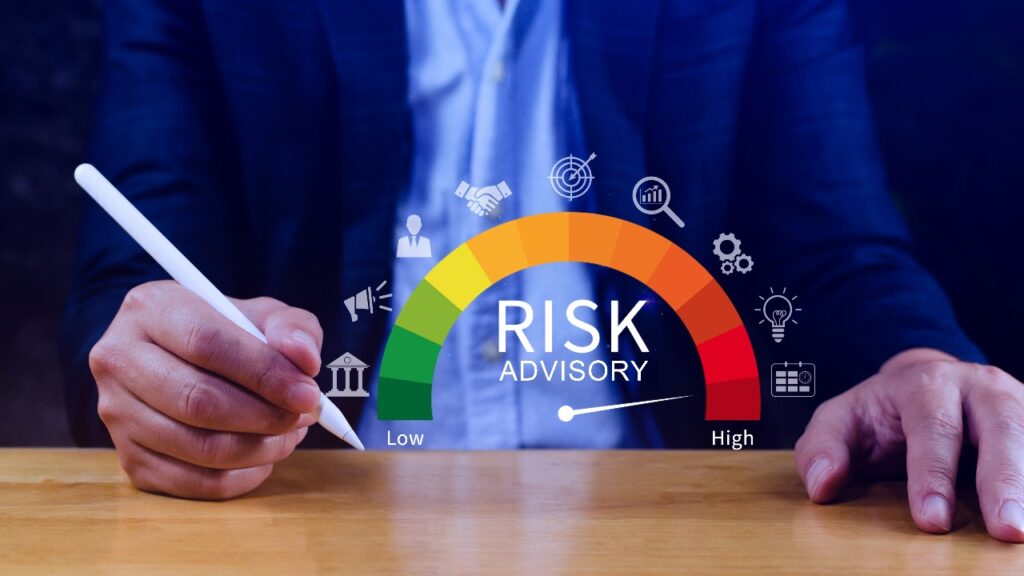The modern dynamic world leaves businesses no choice but to face uncertainty. Economic swings, regulatory overhauls, cybersecurity attacks, and global disasters can upset seemingly stable industries. But risk does not have to be a nightmare; it also brings opportunities for growth, innovation, and strategic advantage. Successful risk advisory services will identify, assess, and mitigate risk and transform the challenge into an opportunity.
This blog discusses how organizations can use risk advisory to understand uncertainty better, have resilience, and achieve a competitive advantage. Real-life case studies are also given in this blog to depict how companies can transform risks into opportunities.
Understanding Risk Advisory
- Risk Identification – Identification of the possible financial, operational, and market risks.
- Risk Measurement-Quantification of the risks in terms of likelihood and impact.
- Risk Mitigation-Implementation of tactics intended to act upon the diminution or removal of risks.
- Risk perception-Strategic decision making used in order to mobilize business growth and innovation.
While organisations that undertake advisory services in managing risk can quite comfortably cope with crises and conduct business over very long periods and live longer, the different kinds of business risks require knowledge of these types to be effective in strategies to be adopted to mitigate the risks.
1. Financial Risks:
These are, of course, some financial risks that include market fluctuations, fluctuations in interest rates, currency risks, and problems of liquidity. In case financial risks are not managed, massive losses may arise. The financial crisis of 2008 manifested that most of the businesses had declared bankruptcy resulting from their inabilities to provide financial risk management techniques.
2. Operational Risks
Operational risks would include inefficiencies of internal processes, disruptions of supply chains, and failures of technologies. Businesses relying on a single supplier would be the most exposed to the risks that have cropped up during the COVID-19 era.
3. Regulatory and Compliance Risks
Most nations have governments that change the rules frequently. In case of default, they can impose humongous fines or even give rise to a reputational risk or a legal one. For instance, a non-compliance with the GDPR caused huge fines on tech companies that are incapable of securing user data.
4.Cybersecurity Risks
Organizations have a huge vulnerability to cyber threats especially data breaches and ransomware attacks because they hugely rely on digital.
Many organizations suffered financially and lost reputations due to disastrous cyberattacks.
5. Strategic Risks
Market position will be destroyed through disastrous business decisions, failures of expansion or innovative changes by competitors. Those firms which fail to respond to change will be outdated.Understanding Risk Advisory
Advisory services are the professional advice sought by businesses and people on strategic, financial, and operational decision making. The bottom line of advisory service is to provide better business performance, reduce vulnerability to risk and stay in consonance with requirements of the laws.
Key Strategies for Converting Risks into Opportunities: Turning Risks into Opportunities
1. Proactive Risk Management
Companies that are prepared and expect risks are rewarded with first-mover advantages. Companies that had diversified their supply chains before the COVID-19 pandemic experienced fewer shocks than those who had centralized their supply chain in a single region.
2. Digital Transformation for Risk Mitigation
More risks are being detected and mitigated by AI, big data, and blockchain. Automated risk assessment tools enable firms to process real-time data in predicting changes in the market and avoid losses.
3. Compliance as Competitive Advantage
While most firms view regulatory compliance as an added headache, those incorporating compliance into the core of their strategy build customer trust. Investors and customers are attracted by transparency in reporting financials and ethical operations of business.
4. Strategic Business Strength through Cybersecurity
Besides making customers more confident, business organizations that take cybersecurity very seriously protect themselves from data-related cyber attacks. It has been known to experience that firms implementing advanced security solutions get clients sensitive about data confidentiality.
5. Strategic Risk Taking
Several firms use risks to enter emerging markets. While entering an emerging economy may seem risky, with proper risk advisory, perhaps nobody else is looking for that opportunity, and companies can seize them.
Case Studies: Risk Advisory in Action
Case Study 1: Risk Taking at Netflix
Problem
By early 2000, Netflix faced stiff competition from Blockbuster, and it didn’t know how the home entertainment industry would develop. Digital streaming was an untapped area of transition, making it risky.
Risk Advisory Approach:
Netflix has invested in data analytics to learn customer preferences.
The company changed from DVD rental services to a streaming service as a calculated risk.
Strategic partnerships and the production of original content helped it gain a competitive advantage.
Outcome:
This position, therefore proved a precious capitalization to the risk of disruption to industry for Netflix. With more than 230 million subscribers, they became the largest entertainment company globally.
Case Study 2: Strong Supply Chain Strategy for Toyota
Problem
In 2011, a powerful tsunami and earthquake devastated Japan. The disaster made Toyota’s entire supply chain fully destroyed. It was now very evident that relying on a particular supplier proved risky.
Risk Advisory Approach
Toyota introduced multi-sourcing for key component suppliers from different suppliers.
The firm hardened disaster recovery planning to take opportunity of real-time data in order to track vulnerabilities in the supply chain.
Toyota took JIT inventory changes in order to provide greater flexibility.
It turned a supply chain crisis into an ‘opportunity for learning’ to harden its global supply network by improving it and thus preventing possible potential future disruptions, whereas it remained market leader.
Case Study 3: Mastercard Cyber Investment
Challenge
Now with the rise of digital transactions, Mastercard became more vulnerable to the risk of growing cyber fraud and data breach.
Risk Advisory Approach
Mastercard has incorporated AI-driven fraud detection systems.
Mastercard has collaborated with the cybersecurity firms to monitor threats in real-time
Mastercard has installed a Zero Trust security framework that verifies each access request.
With effective risk management proactivity, Mastercard earned customer confidence and consolidated the grip on the secure payment market further. It found out its competitive strength through cybersecurity risk.
Case Study 4: Risk to Market Growth at Tesla
Issue
When electric vehicle producer Tesla decided to move into the Chinese market, tension between trades and the impact of government policies on regulations in terms of market expansion had gone soaring.
Risk Consulting Strategy
Collaborated with the Chinese government to launch a Gigafactory in Shanghai.
Localized the supply chain in order to have less dependency on foreign suppliers.
Tesla aggressively priced and marketed their products in a bid to make consumers trust it.
Outcome:
Through strategic risk taking, Tesla successfully made China its biggest market with a revenue of millions worldwide, which enhanced revenue globally.
Future of Risk Advisory
With complexity in business, the advisory in risk taking is becoming simpler. Some of the emerging trends are as follows:
1. AI-based Risk Analytics
It analyzes the risks in big data sets by using artificial intelligence and machine learning and, during this process, predicts threats as well as opportunities in the future.
2. ESG (Environmental, Social, and Governance) Risk Management
The organizations performed investments on the compliance of ESG. That kind of investment lowers the chances of legal related risk and it allows maintaining one’s brand also.
3. Crisis Preparedness and Resilience Planning
The risks nowadays are shifted more to resilience building from reactive management of policies as this is followed for long time business continuity.
4. Blockchain for Secure Transactions
Blockchain technologies also reduced money fraud and hence maintained the reliability and transparency over transactions.
Risk advisory can transform any possible threat to the organization into a strategic advantage if it becomes part of its business strategy. Even potential risk for an organization can be enhanced by proactive management and technological resources, even in understanding lessons learned from Netflix, Toyota, Mastercard, or Tesla.
Risk advisory in the change era is no longer about protection but innovation and resilience in the delivery of long-term success. It is going to be the business of the future, treating uncertainty as an opportunity for change.



